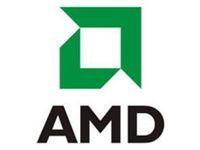AMD Improves CPU Market Share - With Little Impact On Intel
El Segundo (CA) - If we believe the public statements of AMD executives, then the company’s market strategy has always been based on maintaining and growing market share at virtually any expense. So far, this game cost AMD more than $4.3 billion, but according to iSuppli, AMD may have reached a point where it may have stabilized its market share and could have a foundation for growth in the future. However, iSuppli’s numbers indicate that AMD is walking on very thin ice.

iSuppli’s latest CPU market share numbers is the perfect chart for everyone. There is positive and negative items for every party involved and you could spin the numbers in any way you prefer. Depending on your view, both AMD and Intel are growing, while all others are losing, albeit at a slowing pace. Really? Well, not so much.
Let’s look at AMD first. iSuppli said that AMD’s market share was at 10.9% in Q1 2007, which climbed to 14.1% in Q4 2007 and fell slightly to 13.00% in Q1 2008. Overall, the trend appears to be positive for AMD.
Of course, we have to also mention that Q1 2007 was a disastrous quarter for the company. Within three months the company lost almost one third of its CPU market share to Intel (down from 15.7%). The Q1 loss was a staggering $611 million and reflected the full effect and success of Intel Core 2 Duo processors (as well as channel problems for AMD). At that time, AMD held on to a strategy that brought massive price cuts in the hope to keep further market share losses to a minimum. Not considering the cost, the strategy worked and AMD was able to avoid further losses. Market shares are indeed climbing again, but it is clear that the current market share gains are "artificial" gains supported by prices AMD obviously cannot afford.
Q2 2008 is expected to deliver another loss for AMD, while Q3 has been promised by CEO Hector Ruiz to be the return to profitability for the company. Once the company posts positive results again, we will know how much "true" CPU market share the company holds: It will all depend on how profitable AMD’s quad-core and triple-core processors really are and if consumers will prefer triple-core Phenom processors over Intel dual-core CPUs. The graphics unit is the big variable in this game and could play a significant role in bringing the company back to profitability.
Intel, on the other side, seems to have nothing to worry about. The firm’s Q1 2007 share was at 80.4% and dropped to 78.5% in Q4 2007 and went back up to 79.7%. Year-over-year, Intel is down, but you could certainly say that there is a more recent trend that indicates that Intel may be gaining again. Intel recently dropped the prices for two of its quad-core processors to counter AMD’s low quad-core pricing, but has not moved much in dual-core pricing and high-end CPU pricing, indicating that there is very little pricing pressure at this time.
For now, it seems, both companies have settled in comfortable pricing segments and both companies appear to be gaining market share from other vendors, rather from each other. "Other" CPU manufacturers saw their CPU share decline from 8.7% in Q1 2007 to 7.4% in Q4 2007 and 7.3% in Q1 2008. The real question seems to be whether AMD has reached a baseline of market share from where it can create or grow profit margins. Your guess is as good as ours if that is the case at this time.
Stay on the Cutting Edge
Join the experts who read Tom's Hardware for the inside track on enthusiast PC tech news — and have for over 25 years. We'll send breaking news and in-depth reviews of CPUs, GPUs, AI, maker hardware and more straight to your inbox.
AMD’s Q2 2008 ended on June 30.
-
fazers_on_stun "For now, it seems, both companies have settled in comfortable pricing segments" - doesn't seem likely that AMD is too comfortable with its billions in losses over the last 7 quarters. And we'll see in about 90 minutes what 2Q08 hath wrought for them.Reply
Didn't Sharikou predict Intel would "BK" by 2Q08?
Most Popular






